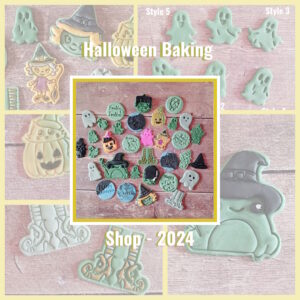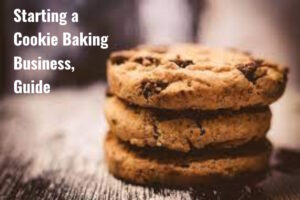Ten Cookie Making Tips and How to get the best from your Cookie Cutter
If you’ve seen our icing efforts you’ll know they leave much to be desired. And that’s putting a positive spin on it. But hey – so long as they taste good that’s what really matters eh? At least that’s what we tell ourselves. Now we at SED HQ make cookie cutters – ergo we make a lot of cookies with which to test said cutters out. So, for the benefit of any new followers and new bakers out there we thought we’d have a look at some cookie making tips. And, alongside side that, some tips on using your cutters to best effect. But first a quick look at a dunking difficult question!
Is it a biscuit or is it a cookie?
The term cookie comes from America but it’s not synonymous with a British biscuit. The two are very different baked good beasties. We’ll take a little look at the biscuit later in the blog. But for now let’s focus on the cookie. Here comes our SED top 10 cookie making tips with a little help from Sally’s Baking Addiction:
- Chill the dough once you’ve made it. And then again once it’s cut out. That lets it settle.
- Oven temperatures: Preheat to the temperature in your recipe. I use 200 for most everything. But you’ll know your own oven. You’ll know when they’re cooked ‘cos they’ll have slightly brown edges. NB: They’ll carry on cooking once out of the oven so don’t overdo.
- Have eggs and butter at room temp. You’ll get more volume from the eggs and the butter is easier to work with.
- Be accurate with your weighing. Too little flour and the cookies will spread ‘cos they’re wet. But too much flour and you’ll have no spread and a dry cookie
- Flour – you could use bread flour for a chewier biccie and normal plain flour gives a lighter cookie.
- Don’t over mix the dough. That means not leaving the mixer on while you dye your roots! That sort of thing – ‘cos too much air means they’ll collapse or spread.
- Use a parchment or a silicone mat. We like this one from Dunelm Mill. It reduces waste so is better for the environment. Don’t put them on a hot baking sheet, that’ll melt the butter and cause spread.
- For even sized cookies – if you’re not going to use a cutter, we use a tablespoon or a teaspoon. No guessing allowed.
- Space on the baking tray – give them elbow room.
- Sticky biccies – if they feel a bit sticky after you’ve cut them out, pop the tray in the fridge for five mins to let the dough settle.
NB: Not that we always take our own advice. I tend to use one oven temperature, use rough measurements while having to combat a teenager trying to mainline the cookie dough. And I’ve never had to use icing to cover burn marks! But you know the old adage about doing what I say not what I do!
To get the best from your cookie cutter
- The most important thing to remember is that they’re not dishwasher proof – a gentle wash by hand is all that’s needed.
BUT – should the worst happen and someone puts your SED cutters in the dishwasher it is possible to regenerate them as you can see in our video below:
2. Before you cut any dough, dip the cutter into flour – that helps reduce stickiness.
3. Cleaning the corners – You can use a cocktail stick or a toothpick to wheedle into the corners of the cutter. Or you can be fancy and use a scribe tool like this one from Effie’s Pantry cakes. And finally …
4. … If you’re using one of our stamps for fondant or dough then dust a wee sprinkle of icing sugar over them before you press them into anything.
Time to make it a business?
What, though, if it’s time to take that love of baking cookies to the next level? What if it’s time to make it a business… we gave a shout out to our Insta Cookiers, for their top tips to help make your business a success here we go.
- Find the decorating technique you like and work on it and perfect it, you don’t have to know all techniques at once.
- Work on your recipes and find your perfect combos, because there’s no point of good looking cookies that don’t taste nice. Invest as much time in developing the flavours, it’s way more important than the decorating part, as at the end of the day they are to be eaten.
- Take time to work out packaging, especially if you will be posting them. It’s important every time you change something about packaging, that you post it to yourself or someone close to you. To truly test how your biscuits travel.
- Don’t be under pressure to have everything sorted before starting. For example for the first 6 months I had one simple logo which I created in a free app on my phone and one sticker. No business cards at all. Don’t spend too much money until you’re sure that’s what you really want to do.
- Make sure you actually enjoy doing it, because otherwise you will waste money and then decide cookies are not for you.
- Get out there and give it a go – don’t wait for everything to be perfect before you begin, better to start and grow with your business.
- And finally, if any of you ever have any questions, feel free to politely reach out to the cookies you admire you never know they might give you a few pointers and tips.
You say cookie – we say biscuit
Okay me star bakers, I mentioned at the top of the blog, how the cookie and the biscuit are not in fact the same thing with different names. Here’s a bite-sized brief from BBC America on the difference:
The word biscuit comes from the Latin bis, meaning twice, and coctus, meaning cooked. The term came into use in 14th century England to describe a confection that was first baked and then dried out. That process produced a hard, flat item that goes soft over time and is delicious when you dip into a cup of your fave hot beverage.
For the British seafaring nation this made a practical food form. Hence ship’s biscuits, or hard tack, were baked up to four times to make sure they didn’t spoil on long voyages. Sailors dipped the tack in brine to soften it and broke the biscuits on their forearms. And that’s why, to this day, the Makaton signing symbol for biscuit is a hand cupping an elbow
Meanwhile, from sometime in the early 1700s we find a Dutch word, koekje, meaning ‘little cake.’ Koekjes often have a raising agent in them to create a cake-like texture. But, for the most part, they’re biscuity enough to interchange with biscuits. That said, they’re much softer than biscuits. And of course, thanks to the Dutch settlers in America, the term translated into the English language as cookie.
And the rest is baked-good history!
Visit our shop
So now you’ve got ten top cookie making tips you’ll be itching to get going we know. So here’s a handy link to our on-line shop where’ll you find cookie cutters for every occasion!
And any questions at all about anything we do, our contact details are here.







